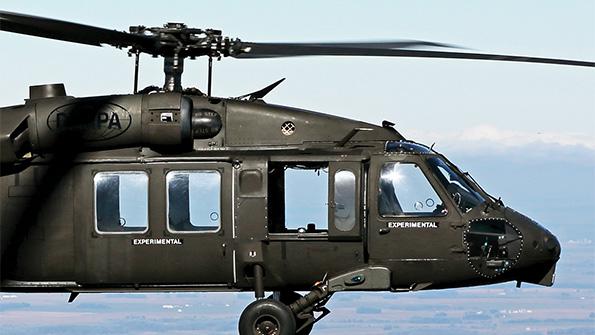Letters From Our Readers, March 21, 2022

Irony in Paint
The person who was fortunate enough to wield the “EXPERIMENTAL” stencil and paint gun on a very prominent location on the cockpit doors of the Sikorsky/DARPA H-60 Optionally Piloted Vehicle pictured on your recent cover (Feb. 21-March 6) likely appreciated the somewhat whimsical irony of informing a nonexistent human pilot of the certification status of an aircraft that has eliminated the need for said human pilot’s existence.
Congratulations to Igor Cherepinsky and his team. It’s likely that the original Igor would be very pleased but not surprised.
Len Meyer, Harwinton, Connecticut
PIC is PIC
Kudos to William Garvey for his column about the events, actual and legal, surrounding the termination of Capt. Justinic (“Costly Countermand,” Feb. 7-20, p. 14).
I age-retired from regional airline flying in 2018 with almost 40 years of commercial experience. The court’s decision against and punishment of the defendant supports the correct concept that the pilot in command (PIC) is just that, negating pressures or threats to operate in questionable or unsafe circumstances from employer-owners.
I was more protected from this under Part 121 operations and helped by union membership, but I understand the palpable pressures under Part 91, where the PIC is often and practically a one-person operation.
I applaud Capt. Justinic’s reasonable decisions and am happy he has been vindicated. On more than one occasion I was asked to operate in either questionable weather or aircraft conditions but managed to enhance safety by just saying “no.”
Capt. (ret.) Bart Groeneveld, Park Hills, Kentucky
The End of Transcendence?
It breaks my heart to write this; I have spent my entire life believing that the exploration of space should transcend international politics. For over 20 years now, the International Space Station has been a shining beacon, literally flying over our heads showing us what human beings from all continents, creeds, religions and cultures can achieve if they work together for a common aim. But there comes a time when it is impossible to divorce these projects from the actions of the governments that support them.
As a recognition of Russia’s outrageous, illegal and barbaric invasion of Ukraine, the other members of the ISS consortium should inform Russia that they are no longer prepared to share that facility with Russia and that their cosmonauts should leave at the earliest opportunity. Should Russia refuse to leave the ISS, the other participant countries should make clear that they intend to withdraw their support from the project and that their astronauts will leave the ISS as soon as possible.
This is of course tragic for the individuals involved both in orbit and on the ground, who have played no part in this confrontation, but this is a time for clear, unequivocal gestures to make it clear to Russia that the action it has taken in Ukraine is totally unacceptable to civilized countries.
Alan Marlow, Great Horwood, England
Pork Barrel Dinosaur?
In his “Feedback” letter, Thomas Frieling expressed the wish for a long operational life for the Space Launch System (SLS) rocket (“Expendability Revisited,” Feb. 7-20, p. 5). Unfortunately, the SLS is obsolete before it has even flown.
The Falcon 9 routinely reuses the majority of its hardware. The Starship should reuse all hardware. Several other competitors have fully reusable and partially reusable spacecraft in development.
The SLS looks like a pork barrel dinosaur. Maybe we can find a spot for it down by the docks alongside the Spruce Goose.
Dale Gibby, Columbus, Indiana
Editor’s note: The government SLS/Orion program was never intended to be a technology driver. It was established to expand human presence beyond low Earth orbit, repurposing as much hardware as possible from the space shuttle program.
CORRECTIONS
An item in “First Take” in the March 7-20 issue should have stated that MDA of Canada awarded Rocket Lab a contract for spacecraft buses.
“Starship, Plan B” (Feb. 21-March 6, p. 32) should have stated that the SpaceX Starship’s lift capacity is 100-150 tons to low Earth orbit.
Behind the Scenes

Chef Wolfgang Puck said hello to Allison Gold (left), Aviation Week senior show manager, and Lydia Janow, senior vice president for events, at the dinner at his restaurant for Aviation Week’s SpeedNews Commercial Aviation Suppliers Conference. The conference and a sister event, the Raw Materials & Manufacturers Supply Chain Conference, drew nearly 300 attendees to Beverly Hills, California, in early March.


